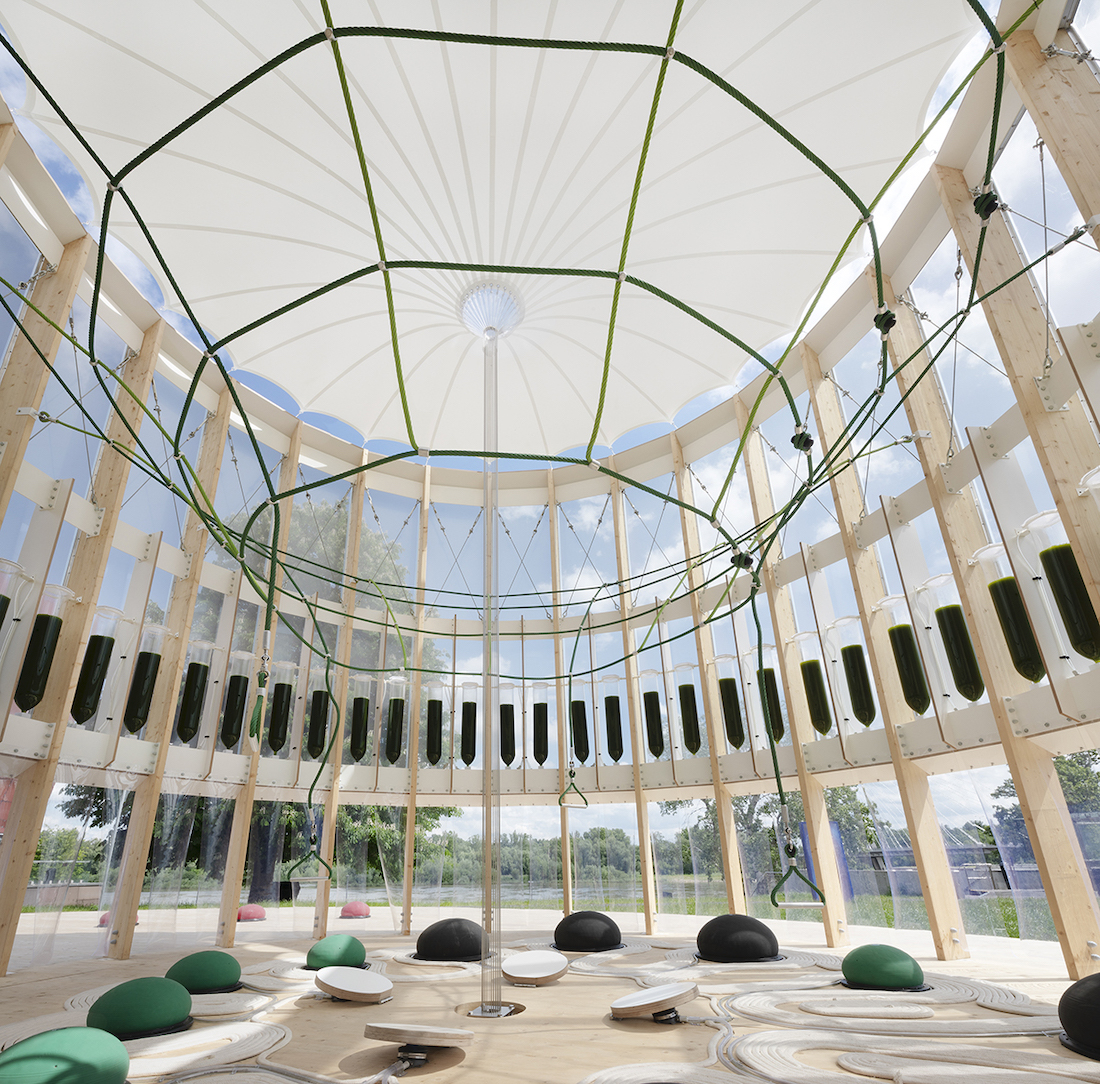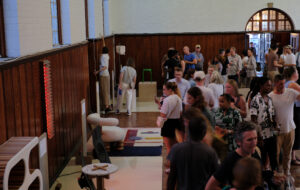Powered by solar energy and play, ecoLogicStudio’s specially designed microclimate harnesses algae biotechnology to clean the air of pollutants

Words by Ewa Effiom
ecoLogicStudio, a London-based architecture and innovation practice, has created AirBubble, an air-purifying playground project in the centre of Warsaw, a city considered to be one of the most polluted in Europe. According to the World Heath Organization, 93% of children in the world live and play in harmful levels of air pollution. ecoLogicStudio’s project harnesses biotechnology – air-purifying micro-algae – to create a microclimate play space with clean air.
AirBubble’s cylindrical timber structure is enveloped in an ETFE membrane, which acts as a buffer for the series of 52 glass algae reactors, containing 520 litres of living green algae cultures that can filter a flow of polluted air of 200 litres/minute. These bioreactors consume polluting molecules and carbon dioxide – and subsequently release clean oxygen into the microclimate. The purifying process is powered by solar energy as well as the kinetic energy from children playing on the bouncy spheres, foot pumps and swinging ropes inside.

AirBubble integrates air pollution sensors that measure the levels of fine particulate PM2.5 and PM10, as well as ground level ozone, nitrogen dioxide, sulphur dioxide and carbon monoxide. It is capable of absorbing 75% of the particulate matter in the air, significantly improving air quality inside. The algae’s filtering processes create a bubbling sound, which helps mask the surrounding urban noise. The roof, an inverted cone, further stimulates air recirculation and natural ventilation.
‘There is untapped value in bringing the bio-intelligence of natural systems into cities, turning buildings into living machines that produce energy, store carbon dioxide and clean the air,’ says Marco Poletto, co-founder of ecoLogicStudio. ‘To achieve this, we need to think about the living world as a part of the current digital revolution: nature becomes part of a new bio-smart infrastructure.’

Over the next few months, AirBubble will continue to function as an ‘urban laboratory’, exploring how biotechnology can help tackle air pollution and mitigate its impact on children’s health. Though the scope of the space itself is limited, the project’s implications are far-reaching.
AirBubble is perhaps characteristic of this period of the anthropocene. Despite the disheartening reality of needing purified bubbles for children to play in, interventions such as this could at least create safe and healthy play spaces until we drastically lower pollution levels in our cities and wider environment.
Photography by Maja Wirkus
Get a curated collection of architecture and design news like this in your inbox by signing up to our ICON Weekly newsletter
















